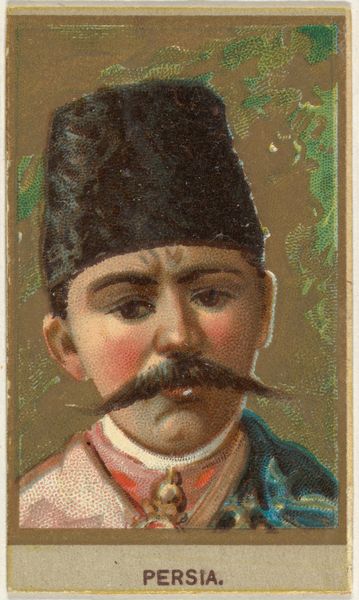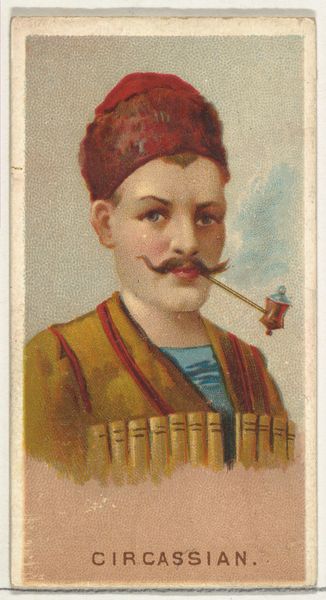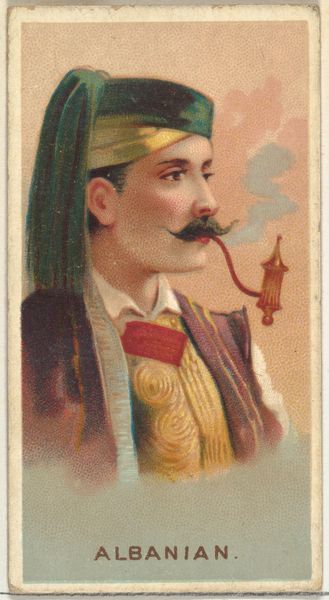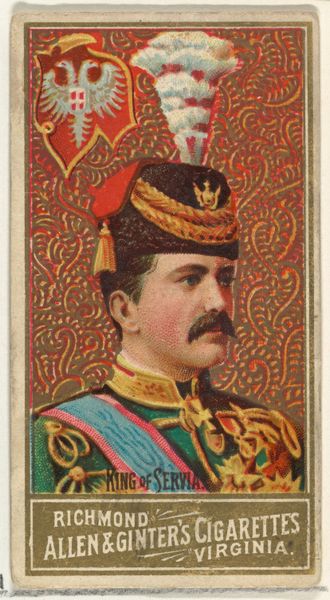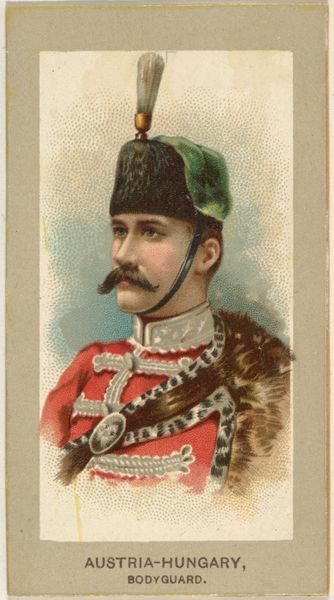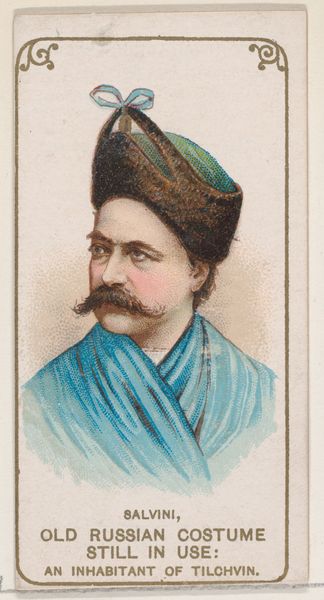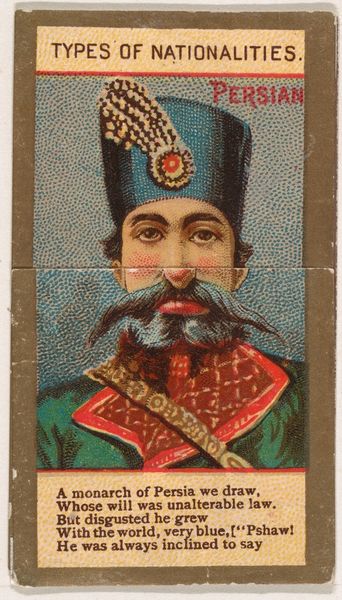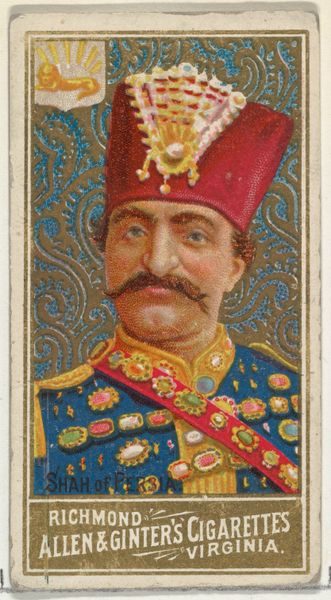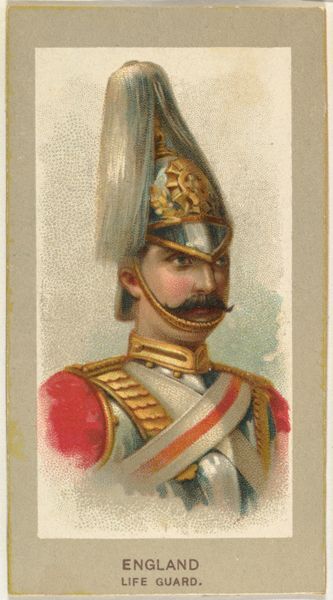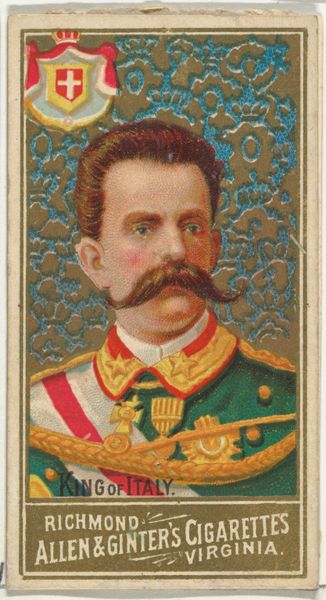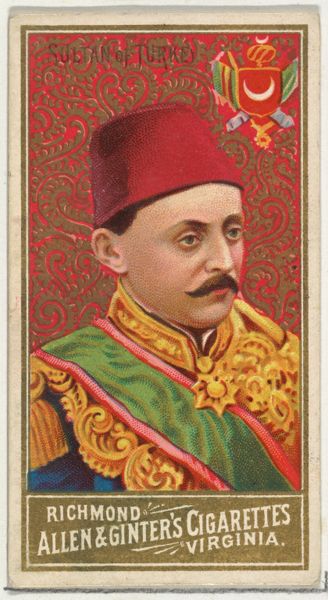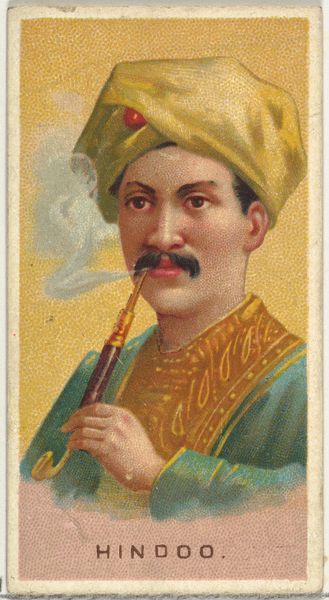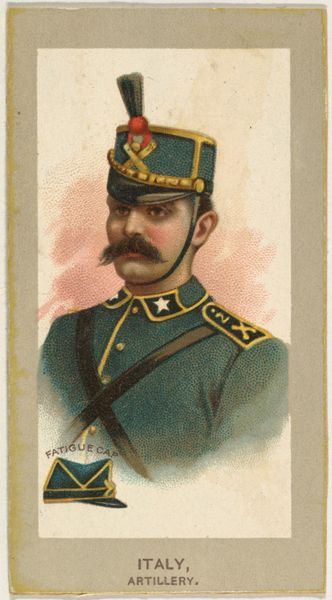
Persia, from the Types of All Nations series (N24) for Allen & Ginter Cigarettes 1889
0:00
0:00
Dimensions: Sheet: 2 3/4 x 1 1/2 in. (7 x 3.8 cm)
Copyright: Public Domain
Editor: Here we have "Persia, from the Types of All Nations series," a print created in 1889 by Allen & Ginter for their cigarette cards. It's quite striking. I’m wondering, what should we be thinking about as we look at this piece today? Curator: It’s fascinating to consider this image in the context of late 19th-century orientalism and the burgeoning tobacco industry. These "Types of All Nations" cards were meant to be collected and consumed alongside cigarettes. It played a crucial role in shaping popular perceptions of foreign cultures for American consumers, how do you see the relationship of this particular depiction to those concepts? Editor: Well, there’s a level of caricature here; he’s almost cartoonish, right down to the blushed cheeks. Curator: Exactly. These images, however ‘innocent’ they might seem, contributed to a power dynamic. It reinforces a Western gaze that exoticizes and simplifies diverse cultures. These were produced and distributed in the United States, which also contributed to notions of American exceptionalism. Consider also that tobacco companies themselves were massive cultural and economic forces at the time, using visual imagery to normalize global commodity chains. What kind of questions does this raise for you, thinking about our contemporary moment? Editor: It really underscores how consumer culture can be a vehicle for propagating certain cultural narratives. I guess I hadn’t considered the cigarette card as an art object that perpetuated and legitimized those ideas. Curator: It serves as a reminder that visual culture is always enmeshed in larger systems of power, production, and consumption. Thinking critically about how we visually represent other cultures remains incredibly relevant. Editor: Absolutely, understanding this card expands my view of how everyday objects carry significant cultural and political weight. Curator: Indeed. And the museum's role is to make those hidden power dynamics visible.
Comments
No comments
Be the first to comment and join the conversation on the ultimate creative platform.
